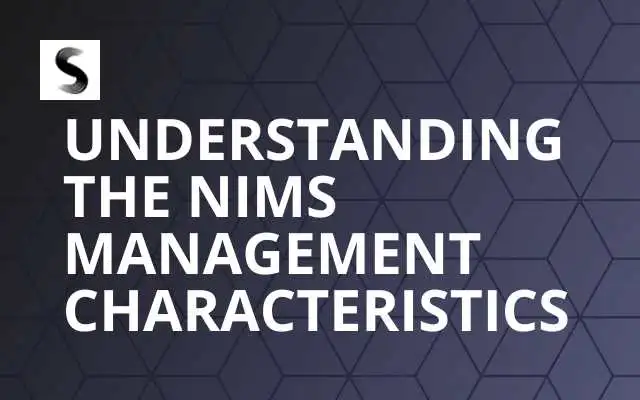The world of emergency management is fraught with uncertainty and complexity. In these grueling times, the National Incident Management System( NIMS) shines the most through its abecedarian principles, similar to the chain of command and concinnity of power.
NIMS: An Overview
Defining NIMS
The National Incident Management System, or NIMS, is a systematic, visionary approach cooked by FEMA to guide departments and agencies in all situations of government, nongovernmental associations, and the private sector to work seamlessly during domestic incidents.
Purpose of NIMS
The top thing of NIMS is to ensure a harmonious and unified public frame for incident operation, preparedness, and response, among other effects. It’s about providing a common, nationwide approach to enable the community to work together to manage all threats and hazards.
NIMS Management Characteristics
Chain of Command
In the context of NIMS, the chain of command refers to the orderly line of authority within the ranks of the incident management organization.
Unity of Command
Unity of Command means that every existent has a designated administrator from whom they admit orders and to whom they’re responsible.
Chain of Command in NIMS
Importance of Chain of Command
The chain of command ensures clarity in communication and decision-making, as orders come from established and recognized authorities. It also helps to maintain order, prevent confusion, and promote operational efficiency.
Examples of Chain of Command in NIMS
A practical example could be a major wildfire. The Fire Chief is the primary authority giving orders to Incident Commanders and instructing ground teams on combatting the fire.
Unity of Command in NIMS
Importance of Unity of Command
Unity of command is crucial in maintaining order and ensuring efficient and clear communication. It promotes accountability and prevents the confusion that can come from receiving instructions from multiple sources.
Examples of Unity of Command in NIMS
In the context of a natural disaster like a hurricane, an individual responder reports to a designated supervisor, receiving directions from that supervisor alone. This ensures a unified response and effective resource management.
The Interplay Between Chain and Unity of Command
Key Differences
While the chain of command refers to the hierarchy through which orders flow, unity of power ensures that an individual receives orders from only one supervisor.
How They Work Together
The chain of command and unity of command work hand in hand within NIMS. The chain of control provides a clear path for instructions, decisions, and information, eliminating ambiguity during critical incidents. Unity of command reinforces this by ensuring that every individual reports to a single supervisor, further clarifying roles and responsibilities and enhancing the effectiveness of the response effort.
Conclusion
NIMS provides an efficient, systematic, and coordinated approach to incident management and emergency response through its fundamental principles, such as chain and unity of command. Understanding these concepts is vital for any agency or individual managing emergencies or incidents. The chain of command provides an orderly hierarchy for clear communication, while the unity of command ensures everyone reports to only one supervisor, preventing confusion and promoting accountability.
FAQs:
What is the main difference between the chain and unity of command?
The chain of control refers to an organization’s clear and orderly line of authority. In contrast, unity of command ensures each report to one, and only one, supervisor.
Why is the chain of command and unity of command essential in NIMS?
These principles provide clear paths for orders and information, eliminate confusion, ensure efficient resource use, and maintain accountability in incident management.
Can there be effective incident management without the chain of command or unity of knowledge?
It’s possible, but in practice, these principles significantly enhance the effectiveness and efficiency of any incident management effort.
How does NIMS maintain the chain of command and unity of power during an incident?
NIMS provides a structured framework and processes to uphold these principles, including standardized procedures, training, and protocols.
Does the unity of command mean an individual can never receive orders from anyone other than their designated supervisor?
Generally, yes. However, in exceptional cases and emergencies, there might be instances when instructions could come from others. Still, these situations are exceptions and not the rule.
